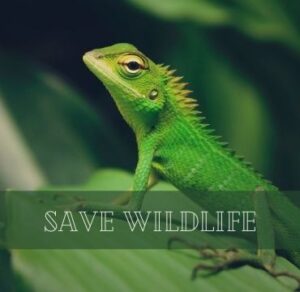Wildlife and Us: An Educational Journey

Introduction to Wildlife Education
Wildlife education is very important in the modern world, where people’s actions have a big effect on nature habitats. It includes learning about different kinds of animals, where they live, how they act, and the problems they face in the world. This information is very important for keeping the careful balance between living things and nature. By learning about animals, we can make choices that are better for the world ecosystem. This basic understanding sets the stage for responsible actions that protect wildlife and promote a peaceful relationship between people and nature.
The Basics of Wildlife Education
Wildlife education is a big part of learning how our ecosystem works. It involves learning about different kinds of animals, where they live naturally, how they act, and the problems they face in the environment. The goal of this area of education is to give students a full picture of biodiversity and how important it is for keeping the environment in balance. People learn about the value of each species and their role in the ecosystem through wildlife education. This information is very important for making people feel responsible for protection efforts and encouraging people to live in harmony with nature. People who learn about wildlife are better able to protect and preserve our natural world.
What is Wildlife Education?
Wildlife education involves learning about different species of animals, their habitats, behaviors, and the challenges they face. It’s a comprehensive approach to understanding the intricate web of life where every creature plays a crucial role.
Wildlife Education is a field of study and awareness focusing on:
- Various animal species and their behaviors.
- Understanding animal habitats and ecosystems.
- Learning about the challenges and threats to wildlife.
- Emphasizing the importance of biodiversity and conservation efforts.
- Aiming to inspire proactive involvement in wildlife protection.

Understanding Our Role in Wildlife Conservation
The Human-Wildlife Connection
Wildlife and people share a very close connection. What we do affects their world and ours as well. Realizing this link is the first thing that needs to be done to protect wildlife. It helps us make smart choices that are good for all the different species that live on Earth.

The Human-Wildlife Connection highlights the interdependent relationship between humans and wildlife. This section emphasizes:
- Our actions directly impact wildlife habitats and their survival.
- Understanding this connection is crucial for effective conservation efforts.
- It encourages responsible behavior towards nature and wildlife.
- Acknowledging this bond aids in fostering a sustainable coexistence.
Benefits of Being Informed
Being informed about wildlife offers significant benefits:
- Promotes Conservation Efforts: Knowledge about wildlife encourages proactive involvement in conservation activities. Understanding the challenges faced by various species leads to a greater commitment to protecting them.
- Enhances Personal Well-being: Learning about wildlife and its ecosystems often heightens our appreciation for nature, which can positively impact mental health and well-being.
- Supports Sustainable Living: Awareness of wildlife’s role in the ecosystem guides more sustainable lifestyle choices, contributing to a healthier planet.
Wildlife education not only enriches our understanding of the natural world but also fosters a more harmonious relationship with our environment. This knowledge is crucial for both personal growth and the sustainable future of our planet.
Engaging with Wildlife Responsibly
Responsible wildlife engagement is critical. It involves respecting their natural habitats and behaviors, minimizing human-induced disturbances. This approach includes avoiding feeding wild animals, keeping a safe distance, and following guidelines in conservation areas. Such mindful practices protect wildlife while ensuring safe and ethical wildlife experiences for everyone.

Educational Opportunities in Wildlife
Wildlife education offers various engaging ways to learn. Visiting wildlife sanctuaries and national parks provides firsthand experience with nature. Participating in conservation programs enhances understanding of ecological balance. Modern technology in education brings wildlife closer to people, making learning about diverse species and their habitats both accessible and immersive. These opportunities foster a deeper appreciation and commitment to wildlife conservation.
The Future of Wildlife Education
The future of wildlife education lies in embracing innovative technologies and methods. It’s about making learning accessible and engaging, utilizing digital platforms, interactive apps, and virtual reality experiences. This modern approach aims to inspire a global audience, ensuring future generations are equipped for effective conservation efforts. As the world evolves, wildlife education must adapt, fostering a deeper, worldwide appreciation and understanding of our natural world.
Conclusion
Wildlife education is not just about acquiring knowledge; it’s about fostering a deep respect and understanding for the creatures with whom we share our planet. By learning about wildlife, we take an essential step towards ensuring a balanced and sustainable future for all. Let us embark on this educational journey together, for the sake of wildlife and us.







